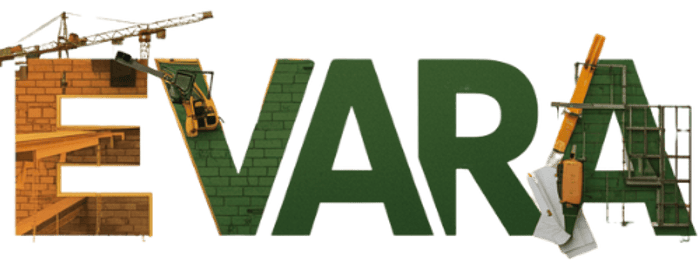How Evara Performs Construction Quality Audits: A Step-by-Step Guide
Introduction
At Evara, we understand that ensuring construction quality is critical for safety, durability, and regulatory compliance. Our construction quality audit process is designed to identify deviations, prevent defects, and enhance the overall reliability of a project. This step-by-step guide provides insight into how we conduct thorough audits to uphold the highest construction standards.
Step 1: Pre-Audit Planning and Preparation
Before conducting a construction quality audit, our team engages in comprehensive planning to ensure the audit is effective and efficient. This includes:
Defining Objectives: Understanding the scope, goals, and specific quality benchmarks.
Reviewing Documentation: Analyzing project plans, contracts, material specifications, and regulatory requirements.
Forming the Audit Team: Assigning experienced auditors and subject matter experts.
Creating an Audit Checklist: Customizing checklists to match project-specific needs.
Coordinating with Stakeholders: Notifying contractors, engineers, and project managers about the audit schedule.
Step 2: On-Site Inspection and Data Collection
Once pre-audit preparations are complete, we conduct an in-depth physical inspection of the construction site. Our team follows a systematic approach to assess various aspects of the project, including:
Material Quality Verification:
Checking compliance with approved specifications.
Ensuring proper storage and handling.
Performing material sampling and testing.
Structural Integrity Assessment:
Examining foundations, beams, columns, and load-bearing walls.
Ensuring correct reinforcement placements and concrete curing.
Reviewing welding and joint strength.
Workmanship Evaluation:
Inspecting construction techniques and adherence to best practices.
Checking alignment, leveling, and finishing quality.
Identifying potential workmanship defects early.
Safety and Compliance Checks:
Assessing adherence to local building codes and industry regulations.
Evaluating worker safety protocols and use of personal protective equipment (PPE).
Identifying hazards that could impact the project's longevity and safety.
Site Management Review:
Observing cleanliness, organization, and material waste management.
Ensuring proper scheduling and workflow efficiency.
Step 3: Testing and Non-Destructive Evaluation
Evara employs advanced testing methodologies to ensure structural reliability without causing damage to materials. Some key techniques include:
Non-Destructive Testing (NDT):
Ultrasonic testing for detecting internal defects in concrete and metals.
Rebound hammer tests for assessing concrete strength.
Infrared thermography for identifying hidden cracks or voids.
Load Testing:
Verifying the capacity of load-bearing structures under simulated stress conditions.
Moisture and Leak Detection:
Identifying water ingress issues that could lead to structural degradation.
Electrical and Plumbing System Checks:
Inspecting wiring installations, circuit loads, and grounding systems.
Assessing plumbing connections, pipe integrity, and water pressure.
Step 4: Documentation and Reporting
Following the inspection and testing phase, our team compiles detailed reports highlighting findings, observations, and recommendations. The reporting process includes:
Audit Summary: An overview of key findings, both positive and negative.
Photographic Evidence: Documenting identified defects and areas of concern.
Grading System: Assigning quality ratings based on industry benchmarks.
Compliance Status: Indicating adherence levels to prescribed standards.
Corrective Action Plan: Providing step-by-step recommendations to address deficiencies.
Step 5: Corrective Measures and Follow-Up Audits
Once the report is shared, Evara ensures that corrective actions are implemented effectively. This step involves:
Collaborating with Contractors: Providing guidance on rectifications.
Monitoring Remedial Actions: Tracking progress in addressing issues.
Re-Auditing: Conducting follow-up inspections to validate corrections.
Final Approval and Certification: Certifying project quality upon successful compliance.
Conclusion
Evara’s construction quality audit process is designed to uphold the highest industry standards, minimize risks, and ensure project success. By following a systematic and thorough approach, we help clients achieve durable, safe, and compliant construction projects.
For further inquiries or to schedule a quality audit, contact Evara today!
